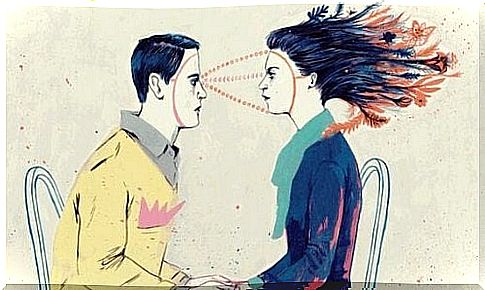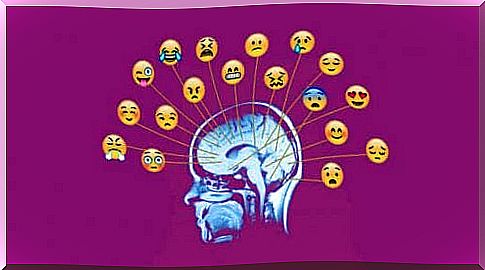Emotional Awareness: What Is It, And Why Do We Need It?

Emotional awareness is what makes it possible to awaken emotional intelligence: it is this first level that helps us to identify and delimit this haze that lies behind our states of mind in order to take control and to feel more competent in our lives. We are talking here about a faculty that we should all develop, a tool of great power with the help of which we could better manage our personal emotions.
It should be noted, despite everything, that such an art is not so easy to master. The emotional experience is heterogeneous, unpredictable and at times chaotic. We have all been in such situations before. Trapped in a place where the only things we are aware of are our discomfort and the price to pay for our health, because of this amalgamation of internal sensations similar to invisible thorns which rob us of our enthusiasm, boycott us and transform us in the shadow of ourselves.
In fact, a lot of people come to their consultation with the psychologist expressing their despondency through classic phrases like “nobody understands me”, “it’s like carrying the whole weight of the world on my shoulders, I’m exhausted. ”Or“ I just cry all day ”. However, behind these expressions, we rarely find a true emotional awareness, an awareness that allows us to identify what is behind our sadness or to see what is hidden behind our permanent fatigue.
Daniel Goleman himself explains to us in books like The Practice of Emotional Intelligence that taking on a conscious practice of our emotions improves our adaptation to everyday problems and challenges. Constantly reflecting on how we feel or what is behind our state of mind has a direct impact on our well-being. It also allows us to learn certain strategies for dealing with possible depression and other psychological disorders.

What is emotional awareness and why do we need it?
Eskimos have about 40 different terms to define snow: wet snow, gray snow, fine snow, compact snow, snow-rain with wind … Learning these words from a young age allows them to adapt much better to a harsh and hostile environment by nature. Okay, but now you will be surprised to know something really curious and which, at first glance, has little to do with Eskimos: about 250 words have been cataloged to denote the different types of emotions and feelings. feelings.
How many do we know personally? Were we taught, when we were children, to use them, to learn to identify them and to use them correctly? Emotions are not like snow falling from the sky, that’s obvious. They live in us, but they also make us experience storms, paralyze us, trap us and isolate us. Knowing how to identify them and give them a name will also help us to survive better in our environments, just like the Eskimo children who know by heart these 40 words to explain what snow looks like every morning.
Therefore, we all need to develop true emotional awareness. Here are some reasons for this idea:
- Recognize my moods and reflect on them to make better decisions.
- Recognize the emotions of others to better relate to them.
- Emotional awareness also allows us to set boundaries, place filters to meet our needs and invest in our well-being, integrity and quality of life.
- It helps us get to know each other better.

Levels of emotional awareness
One of the best skills we can impart to our children is the ability to develop genuine emotional awareness. Ensuring that they can, from an early age, reflect on their emotions, give them a name and channel them in their favor will undoubtedly allow them to be more competent socially and even academically.
To better understand this dimension, we will now delve into the levels that constitute it and which, in turn, are part of the “ Levels of Emotional Awareness” (LEAS) scale created by psychologists Lane and Schwartz.
- Recognize the sensation. All emotion generates a physiological impact of which we must be aware. There may be, for example, a change in our heart rate, tension in our stomach …
- What kind of response does this generate in me? Emotions have an adaptive function, and some invite us to action because of their great energetic power. Identify the orientation that emotion gives to its own energy.
- Identify the primary emotion. Every feeling, every state of mind starts from a primary emotion that you have to know how to identify in the present moment. Is it anger? Sadness ? Anger ?
- Emotions hidden or combined with the primary emotion. This step requires greater insight, delicacy and, above all, courage. Why ? Because accepting negative emotions is not easy. Behind a primary emotion hides a whole ball of knots, a whole labyrinth of dark corners that you have to know how to illuminate, recognize and define. Sometimes behind the sadness is frustration, anger and disappointment. Sometimes behind the anger is the demon of lingering pain over something you haven’t achieved, lost, or haven’t resolved.

In conclusion, and as we have seen, training ourselves as truly competent people in these strategies can directly and positively influence our well-being. Emotional awareness is the wand to orchestrate a happier life, the compass that will lead us to a more fulfilling north, where we will know ourselves better and have greater control over our reality.
So let’s put it into practice!










